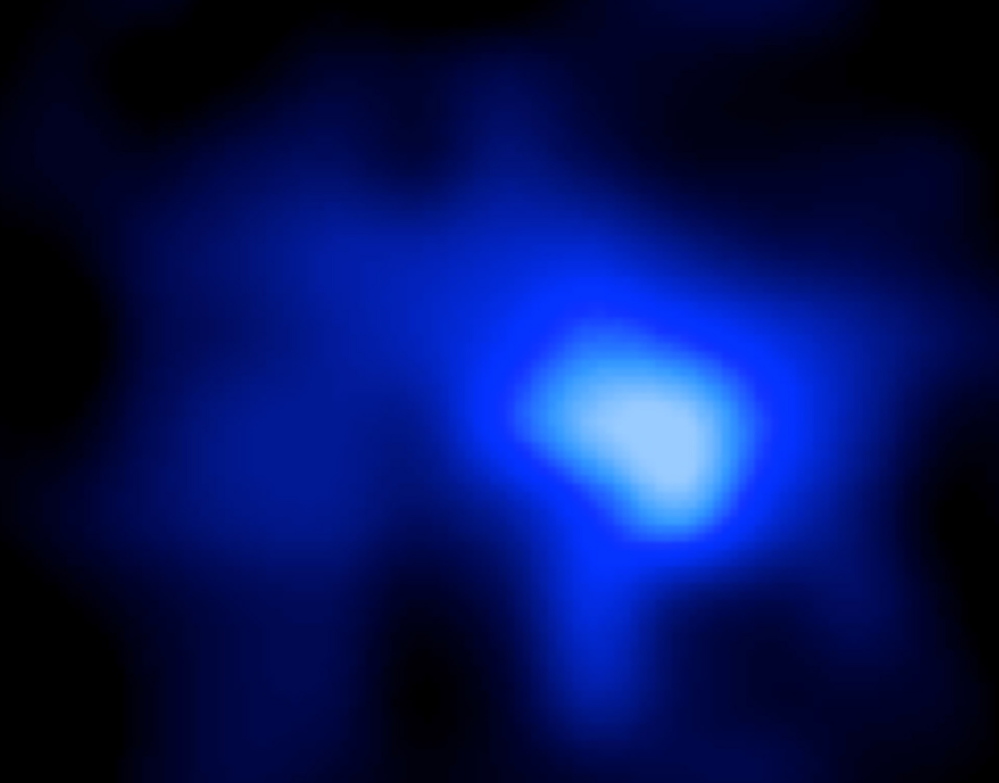It’s also the earliest galaxy discovered, being formed only 670 million years after the Big Bang.
A team of astronomers peering deep into the heavens has discovered the earliest, most distant galaxy yet, a record-breaking 670 million years from the Big Bang.
The findings, described in Astrophysical Journal Letters, reveal a surprisingly active, bright galaxy near the dawn of the cosmos that could shed light on what the universe, now 13.8 billion years old, was like in its young, formative years.
“We’re actually looking back through 95 percent of all time to see this galaxy,” said study coauthor Garth Illingworth, an astronomer at the University of California, Santa Cruz. “It’s really a galaxy in its infancy … when the universe was in its infancy.”
Capturing an image from a far-off light source is like looking back in time. When we look at the sun, we’re seeing a snapshot of what it looked like eight minutes ago. The same principle applies for the light coming from the galaxy known as EGS-zs8-1, except our snapshot of this distant galaxy is roughly 13.1 billion years old.
EGS-zs8-1 is so far away that the light coming from it is exceedingly faint. And yet, compared with other distant galaxies, it’s surprisingly active and bright, forming stars at roughly 80 times the rate the Milky Way does today. This precocious little galaxy has built up about 8 billion suns’ worth of mass, more than 15 percent of the mass of the Milky Way, even though, as it appears to astronomers, it has been around for a mere fraction of the Milky Way’s more than 13 billion years.
“If it was a galaxy near the Milky Way (today), it would be this vivid blue color, just because it’s forming so many stars,” Illingworth said.
One of the many challenges with looking for such faint galaxies is that it’s hard to tell if they’re bright and far, or dim and near. Astronomers can usually figure out which one it is by measuring how much that distant starlight gets stretched, “redshifted,” from higher-energy light such as ultraviolet down to optical and then infrared wavelengths. The universe is expanding faster and faster, so the farther away a galaxy is, the faster it’s going, and the more stretched, or “redder,” those wavelengths of light will be.
The astronomers studied the faint light from this galaxy using NASA’s Hubble and Spitzer space telescopes. But EGS-zs8-1 seemed to be too bright to be coming from the vast distances that the Hubble data suggested.
To narrow in, they used the MOSFIRE infrared spectrograph at the Keck I telescope in Hawaii to search for a particularly reliable fingerprint of hydrogen in the starlight known as the Lyman-alpha line. This fingerprint lies in the ultraviolet part of the light spectrum, but has been shifted to redder, longer wavelengths over the vast distance between the galaxy and Earth.
It’s a dependable line on which to base redshift (and distance) estimates, Illingworth said – and with that settled, the team could put constraints on the star mass, star formation rate and formation epoch of the galaxy.
The telltale Lyman-alpha line also reveals the process through which the universe’s haze of neutral hydrogen cleared up, a period called the epoch of reionization. As stars formed and galaxies grew, their ultraviolet radiation eventually ionized the hydrogen and ended the “dark ages” of the cosmos.
Early galaxies are “probably the source of ultraviolet radiation that ionized the whole universe,” Illingworth said.
Send questions/comments to the editors.



Success. Please wait for the page to reload. If the page does not reload within 5 seconds, please refresh the page.
Enter your email and password to access comments.
Hi, to comment on stories you must . This profile is in addition to your subscription and website login.
Already have a commenting profile? .
Invalid username/password.
Please check your email to confirm and complete your registration.
Only subscribers are eligible to post comments. Please subscribe or login first for digital access. Here’s why.
Use the form below to reset your password. When you've submitted your account email, we will send an email with a reset code.